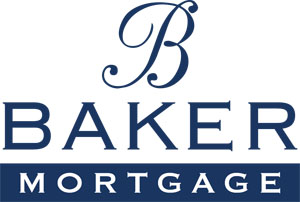Posted on Oct 13, 2021 in
On the Porch with Patti

 If you are in the market to purchase a home now, or plan to be in the near future, the very first step in the process is to get pre-approved for a mortgage. There’s a good reason we call it pre-approval, because it’s supposed to occur before you find a home you want to purchase. Sounds elementary I know, but you would be surprised at how many people miss out on the opportunity to buy the home they’re wanting, because they started searching for homes before getting pre-approved. Looking for the right home is kind of like falling in love, in that sometimes the right one comes along when you least expect it. You want to be ready when it happens.
If you are in the market to purchase a home now, or plan to be in the near future, the very first step in the process is to get pre-approved for a mortgage. There’s a good reason we call it pre-approval, because it’s supposed to occur before you find a home you want to purchase. Sounds elementary I know, but you would be surprised at how many people miss out on the opportunity to buy the home they’re wanting, because they started searching for homes before getting pre-approved. Looking for the right home is kind of like falling in love, in that sometimes the right one comes along when you least expect it. You want to be ready when it happens.
There’s a big difference in getting pre-qualified and pre-approved. A pre-qualification simply means you’ve spoken with a lender and provided some basic information, and based on your conversation, they give you a price or price range for how much home you can buy. It’s a very light sampling of what is required for a pre-approval. It’s like the beginning stages of a pre-approval, but that’s all it is.
With a pre-approval, you start with completing an application, as well as a detailed discussion with an experienced loan officer. By the way, you may be surprised to learn that the person you’re speaking with at the big bank may not actually be a loan officer, but simply an employee of the bank, and that can get you into trouble, either by what they tell you, or what they fail to ask you. Licensed loan officers are required to be tested, pass a background check, adhere to a Code of Ethics, and complete mandatory continuing education every year. The employee at the bank doesn’t have to meet those same standards, and if they provide incorrect information, give you a pre-qualification letter when they shouldn’t, or even flat out lie to you, there’s absolutely no recourse, just a lot of disappointment. Kind of like politicians.
For a pre-approval you’ll be required to provide supporting documentation not only for your income, but copies of bank statements showing that you have sufficient funds available for your down payment and closing costs.
Pre-approval is not meant to be a “do it yourself” project. There are so many pitfalls where you can get hung or get the wrong information by trying to do this strictly online and avoiding any human contact. Here are the three most common mistakes that can seriously throw off your actual qualifying numbers.
- Counting income that can’t be used as qualifying Income
- Using credit scores pulled from a consumer report, rather than a mortgage credit report
- Not using realistic numbers for property taxes – this is HUGE
Bottom line, there’s a lot to this process, and buying a home is a big deal and should be treated that way. Always get off on the right foot with a solid pre-approval. You’ll be glad you did.
For more information, visit www.bakermortgage.com.



 <
<






 If you are in the market to purchase a home now, or plan to be in the near future, the very first step in the process is to get pre-approved for a mortgage. There’s a good reason we call it pre-approval, because it’s supposed to occur before you find a home you want to purchase. Sounds elementary I know, but you would be surprised at how many people miss out on the opportunity to buy the home they’re wanting, because they started searching for homes before getting pre-approved. Looking for the right home is kind of like falling in love, in that sometimes the right one comes along when you least expect it. You want to be ready when it happens.
If you are in the market to purchase a home now, or plan to be in the near future, the very first step in the process is to get pre-approved for a mortgage. There’s a good reason we call it pre-approval, because it’s supposed to occur before you find a home you want to purchase. Sounds elementary I know, but you would be surprised at how many people miss out on the opportunity to buy the home they’re wanting, because they started searching for homes before getting pre-approved. Looking for the right home is kind of like falling in love, in that sometimes the right one comes along when you least expect it. You want to be ready when it happens.